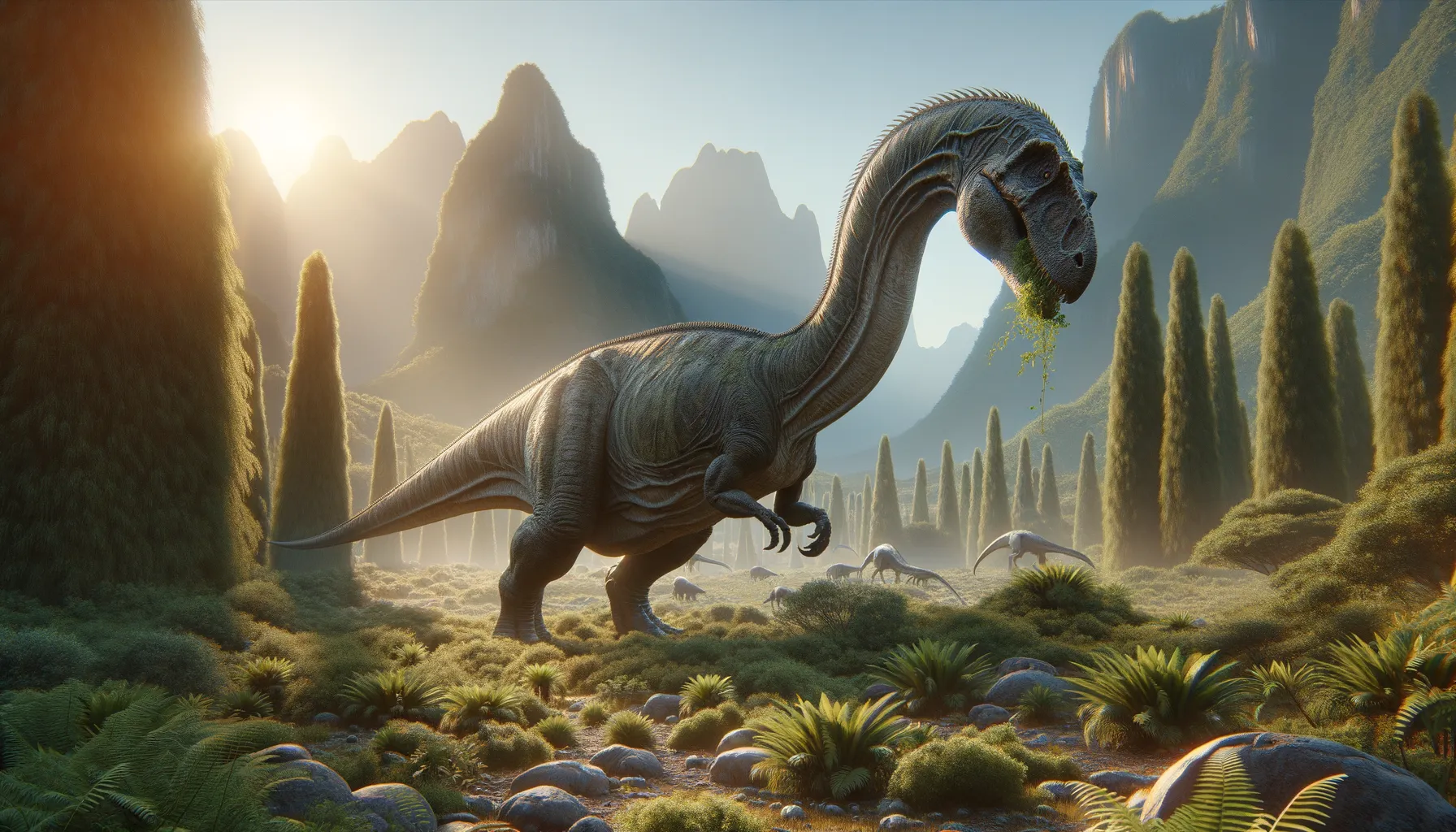
Fusuisaurus
An ancient giant of the Cretaceous world.
Period
Cretaceous
Length
It stretched around 50 feet long.
Height
It stood nearly as tall as a two-story building.
Weight
It weighed as much as 15 to 20 elephants.
Fusuisaurus was a large sauropod dinosaur that roamed the earth during the Early Cretaceous period. Known for its massive size and elongated neck, this herbivorous giant likely fed on a variety of vegetation. Its fossils were discovered in China, providing valuable insights into the diverse dinosaur populations of the region. The Fusuisaurus remains an intriguing subject for paleontologists as they piece together its biological and ecological characteristics.
Diet
Fusuisaurus was an herbivore, feeding primarily on plant matter. Its diet consisted of leaves, ferns, and other vegetation that it could reach with its long neck.
Hunting
As a plant-eater, Fusuisaurus did not engage in hunting behavior. Instead, it grazed across vast areas, using its height to access food that was out of reach for many other dinosaurs.
Environmental challenges
Fusuisaurus faced environmental challenges such as climate fluctuations and changes in vegetation. Predators posed a threat, especially to younger individuals who lacked the protection of size. Maintaining sufficient food intake was crucial for survival, given its enormous size.
Speed
Fusuisaurus moved at a slow pace.
Lifespan
It likely lived for several decades.
First discovery
Fusuisaurus was first discovered in China in 2004.
Fun Facts
- Fusuisaurus was a herbivorous dinosaur that lived during the Early Cretaceous period, around 125 million years ago.
- It is known from fossil remains discovered in China, making it one of the country's native dinosaurs.
- Fusuisaurus belonged to the sauropod group, which includes some of the largest land animals ever to exist.
- Despite its massive size, Fusuisaurus likely moved slowly and steadily, like many other sauropods.
- The name Fusuisaurus combines 'Fusui', the county in China where it was found, and the Greek word 'sauros', which means lizard.
- Fusuisaurus is estimated to have been around 20 meters long, which is about the length of two school buses.
- Its long neck allowed Fusuisaurus to reach high vegetation, and it may have used its neck to maintain a wide field of view for spotting predators.
Growth and Development
Fusuisaurus likely experienced rapid growth in its early years to reach its massive size. This rapid growth would have required a large intake of nutrients. The exact rate of growth and development is difficult to pinpoint due to limited fossil evidence.
Habitat
Fusuisaurus lived in vast, forested areas with abundant vegetation. These areas provided the plant-based diet necessary for its survival. Its habitat also included open plains where it could move freely and evade predators.
Interaction with other species
Fusuisaurus likely coexisted with various other dinosaur species, both herbivorous and carnivorous. Its immense size provided a natural defense against most predators. Interaction with other herbivores might have included competition for resources.
Natural lifespan
Fusuisaurus had a natural lifespan that could extend beyond 50 years.
Reproduction
Fusuisaurus likely laid eggs in nests and showed some degree of parental care. The eggs were probably laid in clusters and incubated by the surrounding environment. Hatchlings were vulnerable and depended on quick growth for survival.
Social behaviour
Fusuisaurus may have lived in herds, providing safety in numbers from predators. Social structures could have included multiple generations, offering protection for the young. Communication likely involved vocalizations, a behavior observed in many dinosaur species.
Fossil locations
Fossils of Fusuisaurus have been found in the Sichuan Basin in China. These fossils are important for understanding the biodiversity of the Cretaceous period in Asia. The locality offers significant insight into the ecosystem dynamics of its time.
